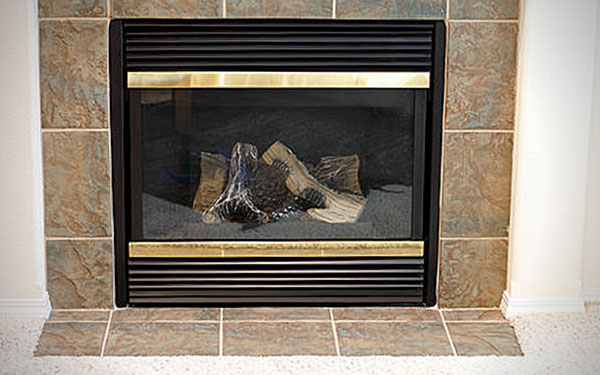Is Your Chimney Damper Damaged or Stuck in Place? Let English Sweep Take a Look
The chimney damper is just one of many pieces of your chimney’s anatomy and, though it often goes overlooked, it has a big job. If it’s not opened before you light a fire, you’ll have smoke in your home in a hurry. And if it’s not shut after the fire is out, cold downdrafts will come swooping down into your home.
When your damper stops working and no longer effectively does its job, the team at English Sweep can help. Sometimes problems are major and sometimes they’re minor, but whether you simply need a pin replaced or it’s time to consider a new damper installation, we can do it all.
Schedule with us now by calling 636-225-3340 or setting up an appointment on our website.
What Is a Damper?
A damper is a device designed to control the flow of air and gases within the chimney and, by extension, control the draft and the rate of combustion in a fireplace, wood-burning stove, or other heating appliance. They also effectively seal the chimney flue when a fire isn’t burning in the fireplace.
Chimney dampers regulate the amount of air entering and exiting the chimney. By adjusting the damper, you can control the flow of air through the chimney and how quickly the fuel is burned in a fireplace or stove. There are a few different types of dampers, but the two most popular versions are the throat damper and the top-sealing damper.
What’s interesting about dampers is that their role changes based on whether or not your system is in use. When a fire isn’t lit, the damper stays sealed up tight, ensuring your home has an easier time maintaining a comfortable temperature, no matter the temp outside. This guarantees that your HVAC system isn’t working extra hard, and it keeps your monthly utility bills in an appropriate range too.
When it’s time to light a fire, the damper is opened up. It should easily open so that any fumes, smoke, and vapors produced by your fire can safely move up your chimney and out of your home. The damper opening can also be adjusted to help control the size of your fires. More oxygen means bigger, brighter fires, and if you shut the damper a bit, your fire will die down a little.
Throat Dampers vs. Top-Sealing Dampers – Which is Better for Me?
Throat Dampers
Throat dampers are what people typically think of when they picture a damper. They’re located at the bottom of the chimney, and they can be opened or shut with an easily accessible lever in the fireplace. There’s no denying that throat dampers have done what they’re supposed to do over the decades – but because of their location, they’re prone to damage and deterioration from heat and byproducts.
One big problem with throat dampers is that the metal material they’re made of doesn’t provide a tight seal against the chimney flue. This gives air more opportunity to seep in or out, and if things get off-kilter, then you’ve really got a problem.
Throat dampers are also prone to rust, which can cause deterioration and keep the damper from smoothly opening or closing altogether. A damper that can’t be opened is pretty useless when building a fire, and if your damper won’t close, the temperature of your home will be affected. In recent years, sweeps have been discovering more flaws with throat dampers and wondering what can be done to address common damper problems – enter top-sealing dampers.
Top-Sealing Dampers
Top-sealing dampers tend to excel where throat dampers fall short. They sit at the top of your flue and close tight with a rubber gasket, ensuring no gaps or openings are present to let air in or out. This means lower energy bills, no cold downdrafts, and no heat escaping your chimney when it’s not supposed to.
Additionally, top-sealing dampers can keep moisture and critters out of your flue, by providing a watertight seal. Top-sealing dampers also avoid rust, which is why our solution-minded sweeps encourage anyone frustrated with their current throat damper to make the switch to top-sealing today. This is an investment that’ll be well worth every cent spent!
When it comes to energy savings, heightened efficiency, and better overall protection for your fireplace, there’s no doubt that top-sealing dampers outweigh throat dampers in every category. Consider making the switch, and start reaping the benefits today.
How Do Top-Sealing Dampers Perform in Extreme Weather?
Top-sealing dampers are located at the top of the chimney flue where the chimney cap usually sits. Since the structure is outside, it’s normal to wonder if it can stand up against the unpredictable turns of Mother Nature. A severe weather storm with high winds can take off a chimney cap – do you have to worry about the same thing happening with a top-sealing damper?
Most top-sealing dampers are made from stainless steel, which provides strong resistance against corrosion, heat, and moisture, so it’s suitable for the harsh conditions that can be encountered at the top of a chimney. The gasket (or the part that seals) on a top-sealing damper is usually made from silicone or rubber. These materials are chosen for their flexibility, resilience, and resistance to extreme temperatures.
Accidents can happen, though, even with the toughest materials involved. If temperatures suddenly drop or if it snows unexpectedly, your top-sealing damper may be harder to maneuver until it thaws out. However long-term issues and significant damage can be prevented with regular maintenance.
Call English Sweep when you have a top-sealing damper issue or if it’s time for your routine chimney inspection. Get in touch with us now at 636-225-3340 or schedule an appointment on our website.
Can I Use a Top-Sealing Damper With a Gas Fireplace?
It is definitely possible to use a top-sealing damper with a gas fireplace, but it ultimately depends on the specific setup of your gas fireplace and chimney. Gas fireplaces are typically designed with specific venting systems to ensure that they operate safely and efficiently. The two main types of gas fireplace venting are the direct vent and the B-vent/natural vent.
Direct vents are sealed and don’t rely on the chimney for venting. So, a top-sealing damper shouldn’t interfere with the fireplace’s operation. On the other hand, older gas fireplaces use a B-vent or natural venting system that relies on the chimney. In this case, installing a top-sealing damper could interfere with proper venting.
If you’ve consulted with your manufacturer and you still aren’t sure if your gas fireplace is compatible with a top-sealing damper, reach out to the customer service team at English Sweep. One of our certified technicians can assess your fireplace and chimney setup and advise you on whether or not a top-sealing damper is safe to use. If there are any modifications or special considerations that need to be made, we can make a recommendation.
Are Top-Sealing Dampers Compatible With All Types of Chimneys?
Top-sealing dampers are most commonly used in masonry chimneys that have a flue tile liner and are designed to fit within the chimney’s existing structure. If you have a prefabricated chimney, a top-sealing damper isn’t the right option for you. These chimneys come with their own venting systems and shouldn’t be modified with a top-sealing damper since it can interfere with the chimney’s ability to operate.
Can a top-sealing damper be retrofitted onto an existing chimney?
A top-sealing damper can often be retrofitted onto an existing chimney. Retrofitting a top-sealing damper is a popular choice for homeowners who have a throat damper, but want to improve energy efficiency, prevent drafts, and improve the functionality of their chimneys. A top-sealing damper is also a great choice if your chimney is missing a damper altogether.
Can a top-sealing damper be used with a multi-flue chimney?
Multi-flue chimneys have multiple flues that are attached to different appliances. While it’s possible to install top-sealing dampers on multi-flue chimneys, it can be a much more complex process. Some dampers are designed for single flues, so you may need to consider a custom solution or have multiple dampers to cover each flue.
How Do I Maintain a Top-Sealing Damper?
The top-sealing damper, cap, and chimney crown get the most concern because those are the parts of the chimney that are outside your home. Because of this, they’re built to withstand the elements – and as a result are usually quite easy to maintain.
Follow the guidelines set forth by the Chimney Safety Institute of America (CSIA) and the National Fire Protection Association (NFPA) and have your chimney inspected and swept at least once a year – and don’t be afraid to schedule an extra service if you use your fireplace a lot.
When there are issues found during an inspection, work with your chimney professional by discussing possible solutions and scheduling follow-up appointments as soon as possible. If we can address issues early, we can prevent them from becoming bigger problems that are more expensive to fix.
What Is the Lifespan of a Top-Sealing Damper?
The lifespan of a top-sealing damper can vary. On average, a well-maintained top-sealing damper can last anywhere from 10 to 20 years. Here are the key factors that can influence the lifespan of a top-sealing damper:
Quality of materials.
The materials used in the construction of the top-sealing damper play a big role in its longevity. High-quality stainless steel, cast aluminum, and durable gaskets are more likely to withstand the rigors of weather and heat.
Weather conditions.
The climate in your area can impact the lifespan of the top-sealing damper. Damp, humid climates and regions with extreme temperature fluctuations can increase wear and tear.
Maintenance.
We’ve said it a lot and we’ll say it again: regular maintenance and proper care can greatly extend the longevity of a top-sealing damper. Inspections, cleaning, applying lubrication, and promptly repairing any damage can help prevent a major breakdown.
Fireplace use.
If you use your fireplace a lot, it can lead to more wear and tear on the damper’s moving parts and seals.
Fuel type.
The type of fuel you use in your fireplace or heating appliance can also influence the damper’s lifespan. Wood-burning fireplaces produce more creosote and soot, which can accumulate on the damper and require more frequent sweepings and maintenance.
Reach Out to Our Crew To Install a Top-Sealing Damper
Are you interested in making the upgrade to a top-sealing damper? Call the team at English Sweep today. If you have questions about whether or not a top-sealing damper is the right fit for your current chimney setup, our customer service representatives are ready to help.
Give us a call at 636-225-3340 or schedule online now.
Some of the most popular products we offer are fireplace inserts and stoves…we have lots of options.

